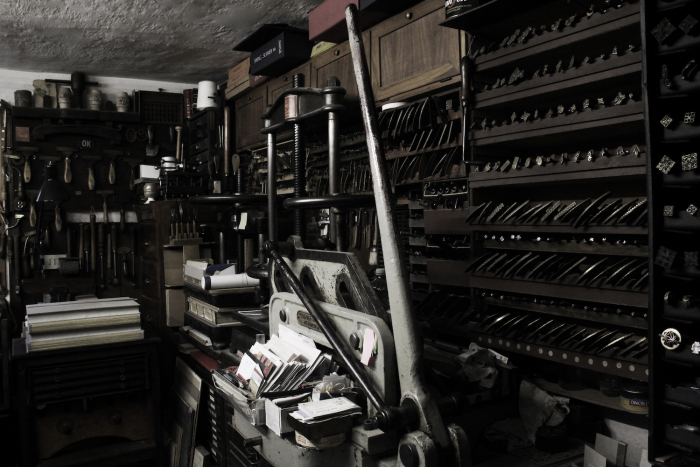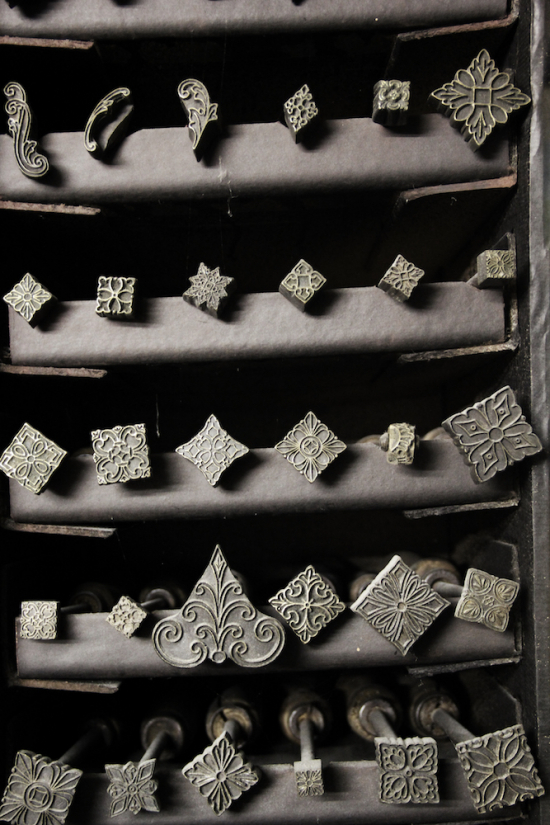Francesco De Pasquale
by Cristina Mirandola
“The bookbindery was started by my elder brother in the Sixties. He learnt the trade from an artisan, then he decided to specialize in manual gilding. We worked together for many years, until I completely replaced him, because my brother is now retired. By now in Piedmont there are very few craftsmen that can perform hand gilding – they generally use machines. To perform it by hand on the back, the types are composed inside these composing sticks that use movable types, and letters are imprinted. We have passed down these skills to each other and now I am teaching them to my daughter. Research is very important for my job, I am interested in engineering new papers and new rollers. I make use of raw leather, tanned with natural dyes to obtain different results every time.
These are the rules of handicraft that are handed down, it is the experience that is passed from father to son and I am glad because I can pass down all these skills to a heir of mine. A tradition that is passed down and enriched at every step ends up refining the experience. Our workshop is recognized as a Piedmontese handmade excellence. It is located in my own house, and this makes it even more of a workshop, I am in my kingdom… I enjoy free working hours… At 5 o’clock in the morning I am often here, the morning is crisp, it is the very tender vine shoot that springs at dawn, it is the best moment to think and plan your work. I have restored and worked on several important books, they are often delicate works, but the workshop’s environment is really helpful, it is suitable for meditation, inside the workshop I feel a bit of a monk, a hermit, the world is left outside… For several years I have been enjoying a partnership with Alfonso Sella, who commissioned me the cases for his herbariums. Sella’s herbariums were composed in an organic way because they followed the seasons. The specimens that he collected were placed inside little folders, they weren’t exposed to the light so that they didn’t fade, and they included his bistre-coloured notes – the nomenclature, the date, the altitude. Sella’s herbariums were created with a scientific-artistic approach and they derived their name from his wife Ada, who contributed to their creation. The scientific herbariums, collecting botanical specimens from the area around Biella, were accompanied by plates and vegetable collages – true inventions, artistic compositions. The specimens were collected ‘with love’ by Alfonso Sella, always in search for new plants.”


